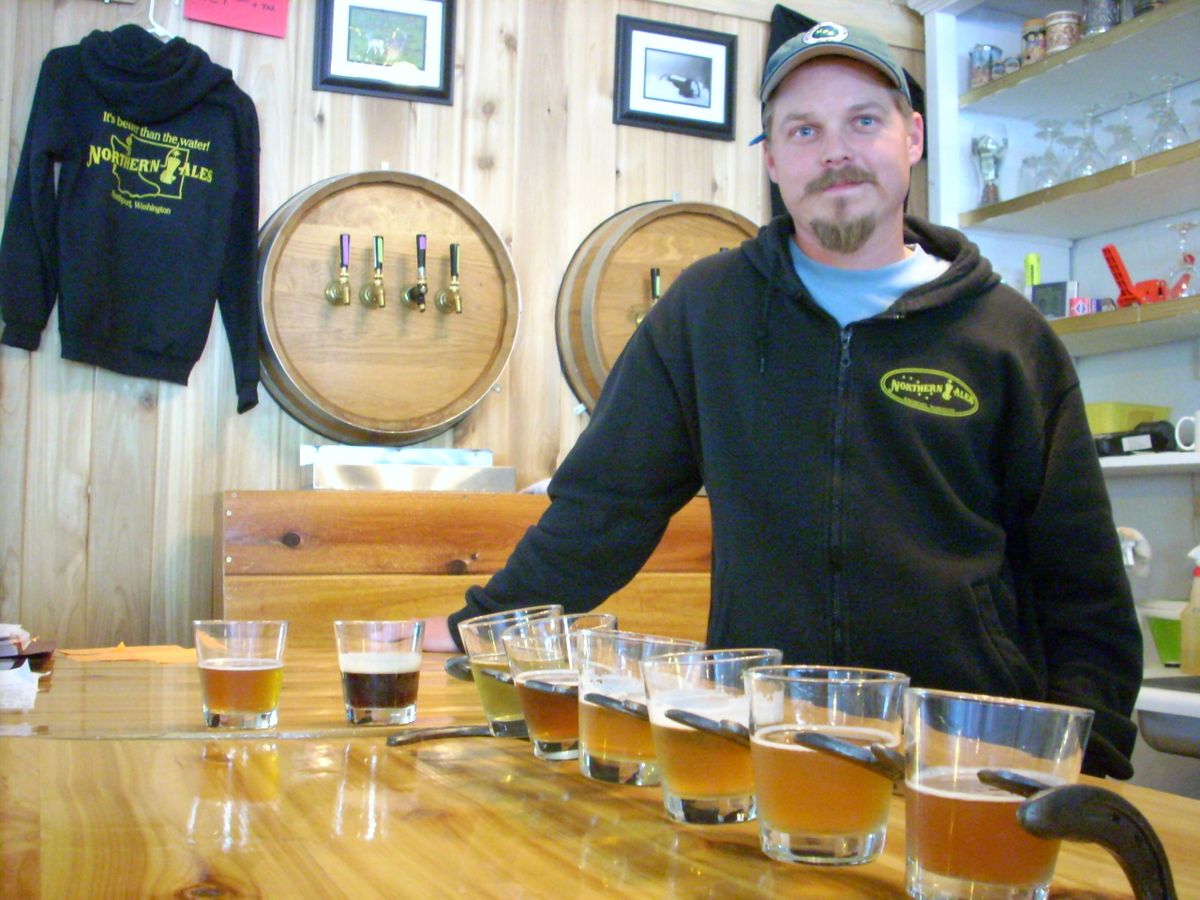Something unique brewing
Small brewery gets creative to deal with hop shortage

Things are tough all over for hopheads like Steve Hedrick.
Six months have passed since the announcement of a crisis-level hop shortage forced microbreweries to start scrambling to secure enough of the aromatic cones to keep the suds flowing.
At the time of the announcement, Hedrick had no idea how he was going to keep making beer.
His fledgling Northern Ales brewery in Northport, Wash., was still too new – and, with a miniscule .65-barrel production capacity, far too small – for him to have established connections to secure a supply contract for hops, one of the three building blocks of any modern beer.
“The only hops I’ve been able to get are through a homebrew supply place over on the coast, where I happened to have met the owner through a mutual friend,” Hedrick said. “He’ll let me buy three pounds at a time, the most that he can order through his contract. And he’s been throwing in a lot of stuff that’s been on the rack awhile, that doesn’t move so well. That kind of thing.”
Hedrick’s been able to keep his nano-brewery afloat by supplementing his scant hop supply with alternative bittering, flavor and aroma agents and by using other tactics.
“I’ve been making all these new strange beers out of whatever I can get my hands on, which keeps customers confused because the board’s continuously changing all the time,” he said.
In one example, the Gingered Ale, Hedrick substituted flavor and aroma hops for a pound of grated ginger. (The resulting beer would pair perfectly with sushi, if they had sushi in Northport. Try taking a growler home with you.)
For another brew, a raspberry-apricot ale, Hedrick boiled raspberries in with the malt for the entire wort-making process, cooking them to the point of bitterness. And, as often happens with experimentation, a happy accident turned the beer into something unexpected.
“(The apricots) got away from me, and they over-boiled and some of them got kind of burnt on the bottom of the kettle,” he said. The batch wasn’t botched, but instead lent the beer a slight smoky flavor just in time for barbecue season.
Hedrick used other odd ingredients in other styles, such as a pound of local honey (Bee Butt Brown), and even took a tip from a fellow small-batch brewer and added a “secret” tropical wood fiber – he promised the brewer he wouldn’t reveal the ingredient’s identity – as a bittering agent.
These unique brews are all well and good, but Hedrick can’t wait to start brewing his standard recipes – he and his customers lament the loss of his stout and IPA styles – rather than finding strange stand-ins for hops.
To that end, Hedrick’s started becoming proactive.
“We put 200 plants in the ground,” he said, referring to the hop fields he and his wife planted on their property 3 1/2 miles from the brewery.
The plants currently are snaking their way up and around the vine wires, but won’t start producing enough hops to make a difference for another year or two.
By then, he’ll already have weathered the worst of the crisis.
“We can’t get any of this year’s crops until January of February at the earliest,” he said. “And we have no guarantee that we’re going to be able to get them then, if there’s some other problem.”
It’s a harsh waiting game. Lucky for Hedrick, the surrounding Stevens County community loves beer.
“Hops grow wild around this part of the country,” Hedrick said. “So a lot of my customers have been coming in, saying, ‘You know, I’ve got these big hop bushes. I don’t know what variety they are, I don’t know anything about ’em, but when they flower, you’re welcome to come pick ’em.’ So, come the end of August, I’m gonna be driving all over the county picking other people’s hops and trying to get together enough to make more beer. Smelling ’em, crushing ’em and hoping for the best.”